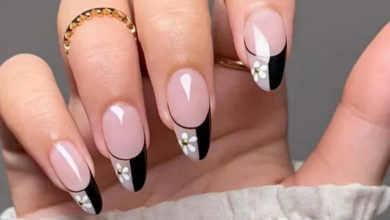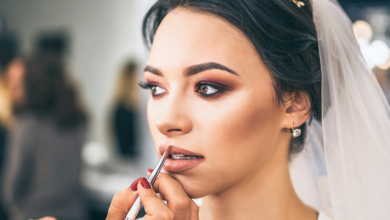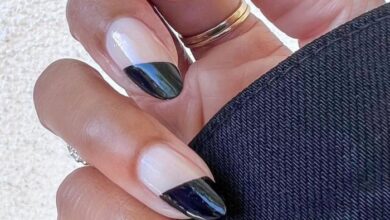
Throughout this article, you’ll learn how to use the color wheel to create complementary makeup looks. We’ll discuss color theory and how it can help you achieve dynamic and balanced makeup. You’ll also discover how understanding undertones can assist in choosing the right foundation and concealer shades.
Additionally, we’ll explore how the color wheel can be used in color correction techniques and how different skin tones can utilize it to pick complementary shades.
Finally, we’ll delve into specific eyeshadow colors that can enhance different eye colors, such as blue, green, brown, and hazel eyes.
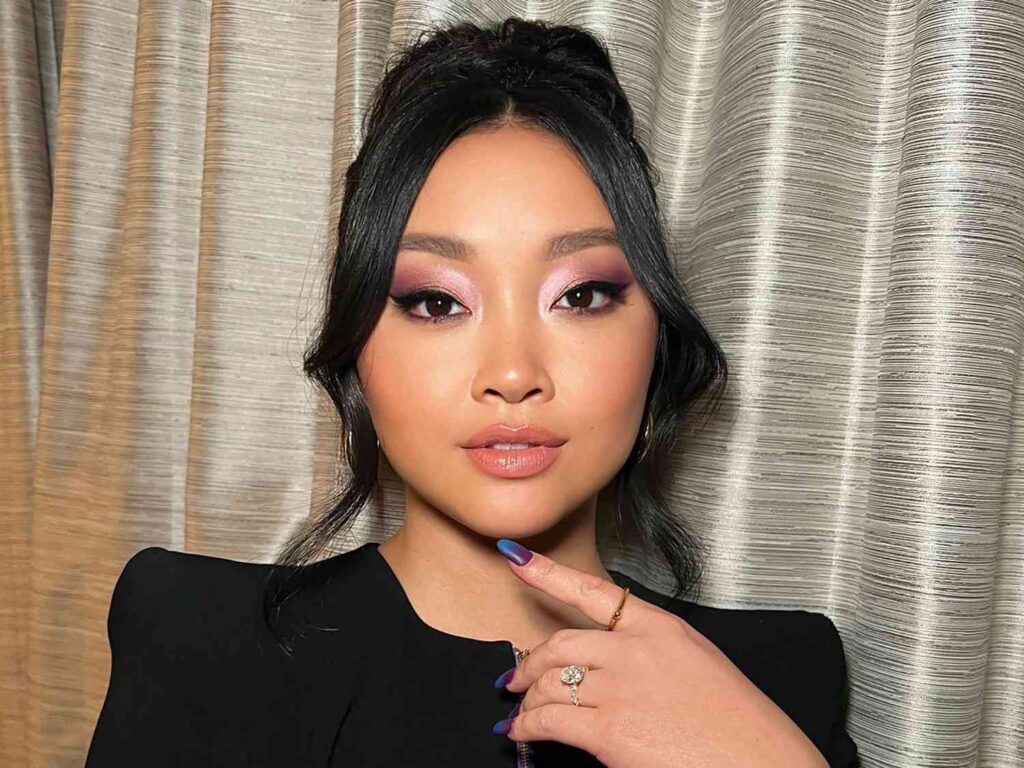
Understanding the Color Wheel
The color wheel is a powerful tool that can be used to create complementary makeup looks. It is a visual representation of the primary, secondary, and tertiary colors, as well as their relationships and harmonies. By understanding how to use the color wheel, you can create dynamic and balanced makeup looks that enhance your natural beauty.
The color wheel as a tool for makeup
In makeup, the color wheel can be used to determine which colors complement each other and create harmonious looks. The color wheel consists of twelve hues, arranged in a circular pattern. The three primary colors are red, blue, and yellow, and they form the basis for all other colors on the wheel.
The secondary colors are created by mixing equal parts of two primary colors. They are orange (red + yellow), green (yellow + blue), and violet (blue + red). The tertiary colors are formed by mixing equal parts of a primary color and a neighboring secondary color.
Formulating complementary color combinations
Complementary colors are opposite each other on the color wheel. When used together, they create a vibrant and balanced effect. For example, red is the complementary color of green, blue is the complementary color of orange, and yellow is the complementary color of violet.
To create complementary makeup looks, you can use the color wheel to choose eyeshadow shades, blush and contour colors, lipstick shades, and even nail polish colors. By understanding the relationships between colors, you can create looks that enhance your natural features and bring out your personality.
Color Theory in Makeup
Color theory plays a crucial role in creating dynamic and balanced makeup looks. By understanding how colors interact with each other, you can effectively use them to enhance your natural beauty.
Creating dynamic and balanced makeup looks
Using the principles of color theory, you can create makeup looks that are visually appealing and bring out your best features. One important concept in color theory is the use of the color wheel to determine which colors work well together.
Complementary colors, as mentioned earlier, create a vibrant and balanced effect when used together. Analogous colors, which are located next to each other on the color wheel, create a more harmonious and subtle look. Triadic colors, which are evenly spaced on the color wheel, create a bold and contrasting effect.
By understanding these color relationships, you can choose eyeshadow shades, blush and contour colors, and lipstick shades that work well together and enhance your natural beauty.
Using color theory principles
When applying makeup, it’s important to consider the principles of color theory to achieve the desired effect. For example, if you have blue eyes, using eyeshadows with yellow or gold undertones can enhance the blue color and make your eyes pop. Similarly, if you have green eyes, using red or burgundy eyeshadows can complement the green color and create a striking look.
For foundation and concealer, understanding undertones is crucial. Undertones are the subtle hues that can be present in the skin. There are three main undertones: cool, warm, and neutral. Cool undertones have hints of blue or pink, warm undertones have hints of yellow or peach, and neutral undertones have a balance of both.
By choosing foundation and concealer shades that match your undertones, you can achieve a more natural and seamless look. The color wheel can help you determine which shades will work best for you based on your undertones.

Choosing Foundation and Concealer Shades
When it comes to choosing the right foundation and concealer shades, understanding undertones is essential. Undertones play a significant role in how well a shade matches your skin and appears on your face.
Understanding undertones in makeup
Undertones are the subtle hues that can be present in the skin. They are different from the surface tone or the shade that you see on the outer layer of your skin. Undertones can be categorized into three main types: cool, warm, and neutral.
Cool undertones have hints of blue or pink. If you have cool undertones, your veins may appear bluish, and silver or white jewelry may look more flattering on you. Warm undertones have hints of yellow or peach. If you have warm undertones, your veins may appear greenish, and gold jewelry may look more flattering on you. Neutral undertones have a balance of both cool and warm undertones.
How to choose the right shades based on undertones
Now that you understand undertones, let’s talk about how to choose the right foundation and concealer shades based on your undertones. For those with cool undertones, look for shades with a pink or blue base. These shades will help neutralize any redness in the skin and create a more even complexion.
For those with warm undertones, look for shades with a yellow or peachy base. These shades will help brighten the skin and give you a warm, healthy glow.
If you have neutral undertones, consider yourself lucky! You have the flexibility to choose shades with either cool or warm undertones. Experiment with different shades to find the one that best matches your skin and enhances your natural beauty.
When choosing a foundation or concealer shade, it’s also important to consider your skin’s overall complexion. If you have fair skin, look for lighter shades. If you have medium to deep skin, opt for shades that match your depth, while also considering your undertones. Always test the shades on your jawline or wrist to find the perfect match.
Remember, the goal is to find a foundation and concealer shade that seamlessly blends with your skin and enhances your natural beauty.
Color Correction Techniques
Color correction is a technique that involves using the color wheel to neutralize or correct unwanted undertones or discolorations in the skin. This technique is especially useful for those with specific skin concerns, such as redness, dark circles, or hyperpigmentation.
Using the color wheel for color correction
The color wheel can be a valuable tool in color correction. By understanding complementary colors and their relationship on the color wheel, you can effectively neutralize unwanted undertones or discolorations.
Here are some common color correction techniques:
- To neutralize redness: Use a green color corrector. Green is the complementary color of red, and applying a green color corrector on areas of redness can help neutralize the red tones and create a more even skin tone.
- To correct dark circles: Use a peach or salmon color corrector. These shades help brighten the under-eye area and neutralize any blue or purple hues.
- To combat dullness or sallowness: Use a lavender color corrector. Lavender is the complementary color of yellow, and applying a lavender color corrector on areas of dullness or sallowness can help brighten the complexion.
When using color correctors, it’s important to apply them sparingly and blend them seamlessly into the skin. Layering foundation or concealer on top can further help to create a flawless and natural finish.
Correcting unwanted undertones in makeup
Color correction techniques can also be applied to makeup to correct unwanted undertones. For example, if you find that your foundation or concealer appears too warm or too cool on your skin, you can use a color corrector to balance out the undertones and achieve a more natural look.
To correct a foundation or concealer that appears too warm, you can mix in a small amount of a cool-toned color corrector, such as a blue or green, to neutralize the warmth.
Similarly, to correct a foundation or concealer that appears too cool, you can mix in a small amount of a warm-toned color corrector, such as a yellow or orange, to add warmth and balance.
Color correcting makeup products can be found in various forms, such as color correcting primers, concealers, or even color correcting palettes. Experiment with different products and techniques to find the one that works best for you.
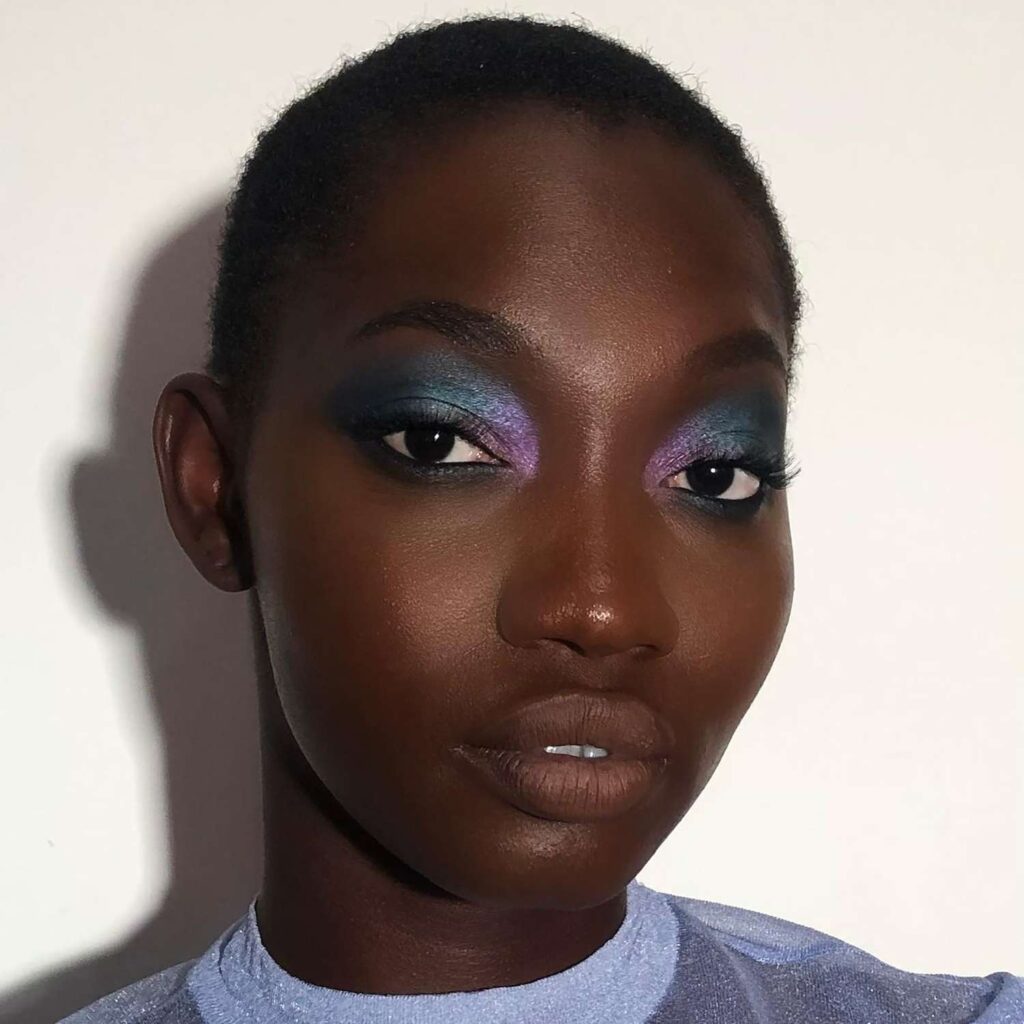
Complementary Shades for Different Skin Tones
The color wheel can be a helpful tool for choosing complementary shades for different skin tones. Understanding how different colors interact with each other on the color wheel can help you create makeup looks that enhance your natural beauty.
Utilizing the color wheel for different skin tones
When it comes to choosing complementary shades for different skin tones, it’s essential to consider the undertones of the skin and how they interact with various colors.
For cool undertones, which have hints of blue or pink, shades with cool undertones can complement the skin and create a harmonious look. Think of shades like purples, blues, and pinks. These hues can enhance the natural coolness of the skin and create a visually balanced effect.
For warm undertones, which have hints of yellow or peach, shades with warm undertones can complement the skin and create a vibrant look. Consider shades like oranges, golds, and browns. These hues can enhance the natural warmth of the skin and create a visually striking effect.
Neutral undertones have the versatility to work well with a range of colors. Whether cool or warm, neutral undertones can create a harmonious and balanced look. Experiment with different shades to find the ones that enhance your natural beauty and make you feel confident.
Picking complementary shades for specific skin tones
To create a complementary makeup look, it’s important to choose shades that work well with your specific skin tone. Here are some examples of complementary shades for different skin tones:
- Fair skin: Light pinks, peaches, and soft neutrals can create a fresh and youthful look on fair skin. Light shades with a hint of warmth can add dimension and enhance the natural beauty of fair complexions.
- Medium skin: Warm golds, bronzes, and rich browns can create a warm and radiant look on medium skin. These shades can enhance the natural warmth of medium complexions and create a visually stunning effect.
- Deep skin: Bold purples, vibrant blues, and rich plums can create a dramatic and striking look on deep skin. These shades can enhance the natural richness of deep complexions and create a visually captivating effect.
Remember, these are just general guidelines, and everyone’s skin is unique. It’s essential to experiment with different shades and find the ones that make you feel confident and beautiful.
Enhancing Eye Color with Eyeshadows
Eyeshadows can play a significant role in enhancing your eye color and making your eyes pop. By understanding the color wheel and how different shades interact with each other, you can choose eyeshadows that bring out the natural beauty of your eyes.
Using the color wheel to enhance eye color
The color wheel can be an invaluable tool when it comes to enhancing eye color with eyeshadows. By choosing eyeshadows that are complementary or contrasting to your eye color, you can create a captivating and mesmerizing effect.
Here are some general guidelines for enhancing different eye colors:
Choosing eyeshadows based on eye color
- Blue eyes: Blue eyes can be enhanced with eyeshadows that have yellow or gold undertones. These shades create a contrast with the blue color and make the eyes appear brighter. Think of shades like golds, bronzes, and warm browns. These hues can create a beautiful and complementary look for blue eyes.
- Green eyes: Green eyes can be complemented with eyeshadows that have red or burgundy undertones. These shades create a striking contrast with the green color and make the eyes pop. Think of shades like plums, cranberries, and deep reds. These hues can create a captivating and complementary look for green eyes.
- Brown eyes: Brown eyes are versatile and can wear a wide range of colors. However, cool tones like plums and blues can make warm flecks in brown eyes stand out. Experiment with different shades to find the ones that enhance the natural richness and depth of your brown eyes.
- Hazel eyes: Hazel eyes can be enhanced with eyeshadows that have terracotta shades with orange undertones. These shades bring out the golden and green flecks in hazel eyes and create a mesmerizing effect. Think of shades like warm coppers, burnished oranges, and earthy browns. These hues can make hazel eyes truly pop.
Remember, these are just general guidelines, and there are no hard rules when it comes to makeup. Play around with different shades and have fun experimenting with different looks.
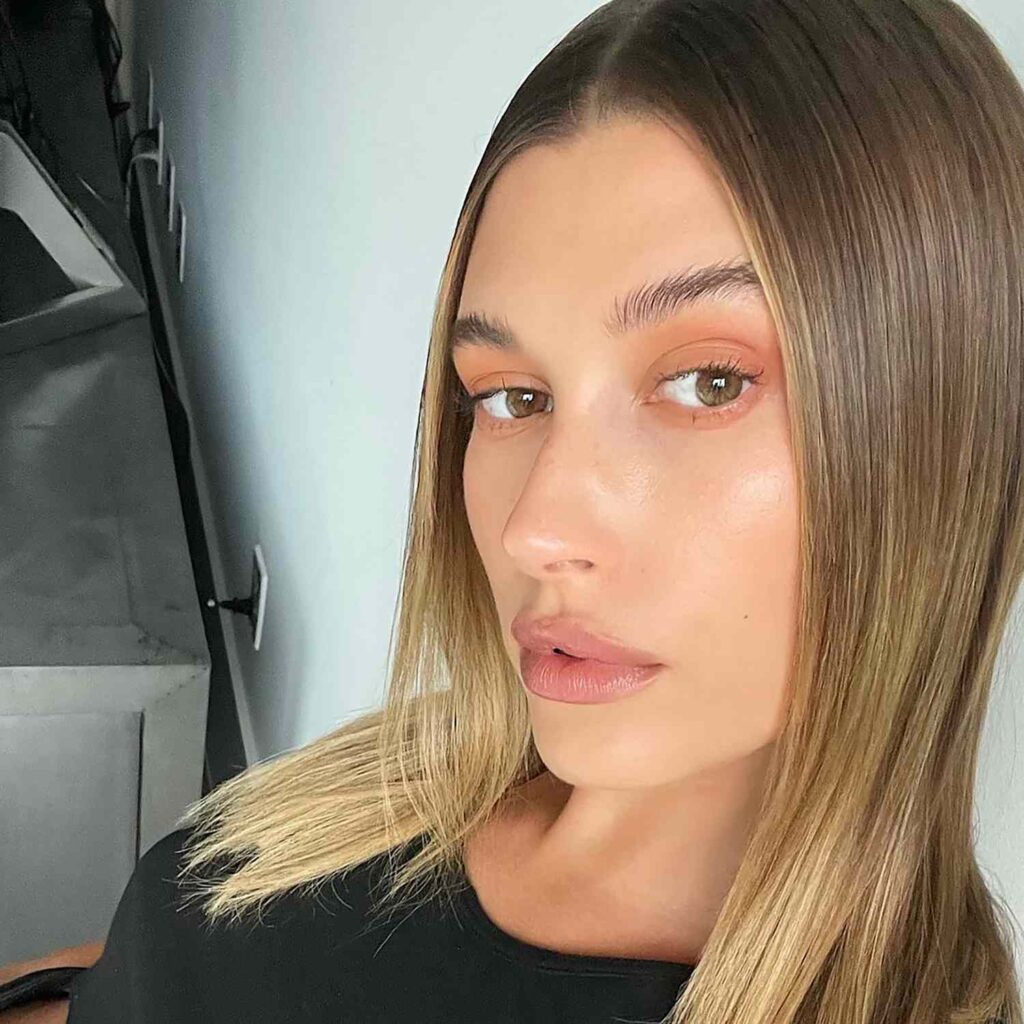
Enhancing Blue Eyes
Blue eyes are often considered one of the most striking eye colors. By using the color wheel to choose the right eyeshadows, you can enhance the natural beauty of blue eyes and make them appear even more vibrant.
Yellow or gold undertone eyeshadows to enhance blue eyes

Blue eyes can be enhanced by using eyeshadows that have yellow or gold undertones. These shades create a contrast with the blue color and make the eyes appear brighter and more vibrant.
When selecting eyeshadows for blue eyes, consider shades like golds, bronzes, and warm browns. These hues can bring out the blue in your eyes and create a captivating and complementary look.
Experiment with different finishes, such as matte or shimmer, to create different effects. For a more subtle and natural look, opt for matte eyeshadows. For a more glamorous and eye-catching look, choose shimmer eyeshadows.
Creating a complementary makeup look for blue eyes
To create a complementary makeup look for blue eyes, it’s important to consider not only the eyeshadows but also other elements of your makeup, such as blush, lipstick, and even nail polish.
When it comes to blush, choose shades that are in the same color family as your eyeshadows. For example, if you’re using gold eyeshadows, consider peachy or apricot blushes. These shades will create a harmonious and balanced look.
For lipstick, consider shades that complement the undertones of your eyeshadows. If you’re using warm gold eyeshadows, opt for warm-toned lipsticks, such as peachy nudes or coral shades. These shades will tie the look together and create a cohesive and complementary effect.
When it comes to nail polish, coordinate the colors with your eyeshadows and lipstick. Choose shades that are in the same color family or have similar undertones. For example, if you’re using gold eyeshadows and peachy lipstick, consider nail polish in a warm gold or peachy shade. This will create a polished and harmonious look.
Remember, the goal is to enhance the natural beauty of your blue eyes and create a makeup look that makes you feel confident and beautiful.
Complementing Green Eyes
Green eyes are known for their unique and captivating beauty. By using the color wheel to choose the right eyeshadows, you can complement the natural green color of your eyes and create a mesmerizing look.
Red or burgundy eyeshadows for green eyes
Green eyes can be complemented by using eyeshadows that have red or burgundy undertones. These shades create a striking contrast with the green color and make the eyes pop.
When selecting eyeshadows for green eyes, consider shades like plums, cranberries, and deep reds. These hues can bring out the green in your eyes and create a captivating and complementary look.
Experiment with different finishes, such as matte or shimmer, to create different effects. For a more natural and subtle look, opt for matte eyeshadows. For a more dramatic and eye-catching look, choose shimmer eyeshadows.

Makeup ideas to complement green eyes
To create a makeup look that complements green eyes, consider not only the eyeshadows but also other elements of your makeup, such as blush, lipstick, and even nail polish.
When it comes to blush, choose shades that are in the same color family as your eyeshadows. For example, if you’re using plum eyeshadows, consider berry or mauve blushes. These shades will create a harmonious and balanced look.
For lipstick, consider shades that complement the undertones of your eyeshadows. If you’re using cranberry eyeshadows, opt for berry-toned lipsticks or deep red shades. These shades will tie the look together and create a cohesive and complementary effect.
When it comes to nail polish, coordinate the colors with your eyeshadows and lipstick. Choose shades that are in the same color family or have similar undertones. For example, if you’re using plum eyeshadows and berry lipstick, consider nail polish in a deep purple or berry shade. This will create a polished and harmonious look.
Remember, the goal is to complement the natural beauty of your green eyes and create a makeup look that makes you feel confident and beautiful.

Accentuating Brown Eyes
Brown eyes are versatile and can wear a wide range of colors. By choosing the right eyeshadows, you can accentuate the warm flecks and depth in brown eyes and create a captivating and beautiful look.
A range of colors for brown eyes
Brown eyes can wear a variety of colors, from warm tones to cool tones. The key is to choose shades that enhance the natural richness and depth of brown eyes.
For a natural and everyday look, consider shades like warm browns, bronzes, and coppers. These hues can enhance the warm flecks in brown eyes and create a soft and flattering effect.
For a more dramatic and bold look, experiment with cool-tone shades like plums, blues, and greens. These shades can create a striking contrast with the richness of brown eyes and make them stand out.
The color wheel can be a helpful tool when choosing complementary shades for brown eyes. Consider shades that are opposite brown on the color wheel, such as blues or purples, to create a visually captivating effect.
Cool shades to make warm flecks stand out
If you have brown eyes with warm flecks, such as golden or amber tones, consider using cool-toned eyeshadows to make those warm flecks stand out.
Shades like plums, purples, and even blues can create a striking contrast with the warm flecks in brown eyes and make them appear even more vibrant.
When it comes to choosing eyeshadows, consider different finishes, such as matte or shimmer. Matte eyeshadows can create a more natural and subtle look, while shimmer eyeshadows can add a touch of glamour and eye-catching effect.
Experiment with different shades and finishes to find the ones that enhance the natural beauty of your brown eyes and make you feel confident and beautiful.
Bringing Out Hazel Eyes

Hazel eyes are known for their unique combination of colors, ranging from green to brown and even gold or amber. By choosing the right eyeshadows, you can bring out the natural beauty of hazel eyes and make them pop.
Terracotta shades with orange undertones for hazel eyes
Hazel eyes can be enhanced by using eyeshadows that have terracotta shades with orange undertones. These shades bring out the golden and green flecks in hazel eyes and create a mesmerizing effect.
When selecting eyeshadows for hazel eyes, consider shades like warm coppers, burnished oranges, and earthy browns. These hues can bring out the different colors in your eyes and create a captivating and complementary look.
Experiment with different finishes, such as matte or shimmer, to create different effects. For a more natural and everyday look, opt for matte eyeshadows. For a more glamorous and eye-catching look, choose shimmer eyeshadows.
Makeup tips to make hazel eyes pop

To create a makeup look that makes hazel eyes pop, consider not only the eyeshadows but also other elements of your makeup, such as blush, lipstick, and even nail polish.
When it comes to blush, choose shades that are in the same color family as your eyeshadows. For example, if you’re using warm copper eyeshadows, consider peachy or apricot blushes. These shades will create a harmonious and balanced look.
For lipstick, consider shades that complement the undertones of your eyeshadows. If you’re using burnished orange eyeshadows, opt for warm-toned lipsticks, such as coral or terracotta shades. These shades will tie the look together and create a cohesive and complementary effect.
When it comes to nail polish, coordinate the colors with your eyeshadows and lipstick. Choose shades that are in the same color family or have similar undertones. For example, if you’re using warm copper eyeshadows and coral lipstick, consider nail polish in a warm copper or coral shade. This will create a polished and harmonious look.
Remember, the goal is to bring out the natural beauty of your hazel eyes and create a makeup look that makes you feel confident and beautiful.
Using the Color Wheel for Lipstick

The color wheel can be a valuable tool when it comes to choosing the right lipstick shades. By understanding how different colors interact with each other, you can create a complementary lip color that enhances your natural beauty.
Choosing lipstick shades based on the color wheel
When it comes to choosing lipstick shades, the color wheel can be a useful guide. By understanding color relationships and harmonies, you can select shades that work well with your skin tone and create a visually pleasing effect.
Here are some general guidelines for choosing lipstick shades based on the color wheel:
- Complementary colors: Choose lipstick shades that are complementary to your skin tone. If you have warm undertones, consider shades with cool undertones, like pinks and berries. If you have cool undertones, consider shades with warm undertones, like corals and oranges.
- Analogous colors: Choose lipstick shades that are in the same color family as your skin tone. For warm undertones, consider shades in the warm color family, like reds and browns. For cool undertones, consider shades in the cool color family, like purples and plums.
- Triadic colors: Choose lipstick shades that create a bold and contrasting effect. Triadic colors are evenly spaced on the color wheel and create a visually striking look. Experiment with different triadic combinations, like reds, blues, and yellows, to find the ones that work best for you.
When choosing lipstick shades, it’s also important to consider your overall makeup look and the occasion. For a natural and everyday look, opt for shades that are close to your natural lip color. For a more dramatic and bold look, experiment with bolder and brighter shades.
Remember, these are just general guidelines, and everyone’s skin tone is unique. It’s essential to experiment with different shades and find the ones that make you feel confident and beautiful.
Creating a complementary lip color
To create a complementary lip color, consider not only your skin tone but also other elements of your makeup, such as your eyeshadows and blush.
If you’re wearing eyeshadows with warm undertones, consider choosing a lipstick shade with cool undertones to create a complementary look. For example, if you’re wearing gold eyeshadows, consider a pink or berry lipstick.
If you’re wearing eyeshadows with cool undertones, consider choosing a lipstick shade with warm undertones to create a contrasting look. For example, if you’re wearing purple eyeshadows, consider a coral or orange lipstick.
When it comes to blush, choose shades that are in the same color family as your lipstick. This will create a harmonious and balanced look. For example, if you’re wearing a pink lipstick, consider a pink or rose blush.
Remember, the goal is to create a lip color that complements your overall makeup look and enhances your natural beauty.
Creating Harmonious Blush and Contour

Blush and contour can add dimension and harmony to the face. By using the color wheel, you can choose blush and contour shades that work well with your skin tone and enhance your natural beauty.
Using the color wheel for blush and contour
The color wheel can be a valuable tool when it comes to choosing blush and contour shades. By understanding color relationships and harmonies, you can select shades that complement your skin tone and create a balanced and harmonious look.
Here are some general guidelines for using the color wheel for blush and contour:
- Complementary colors: Choose blush and contour shades that are complementary to your skin tone. If you have warm undertones, consider shades with cool undertones, like pinks and mauves, for blush. For contour, consider shades with warm undertones, like bronzes and browns. If you have cool undertones, consider shades with warm undertones, like peaches and corals, for blush. For contour, consider shades with cool undertones, like greys and taupes.
- Analogous colors: Choose blush and contour shades that are in the same color family as your skin tone. For warm undertones, consider shades in the warm color family, like oranges and terracottas, for blush. For contour, consider shades in the warm color family, like chocolate browns and caramels. For cool undertones, consider shades in the cool color family, like pinks and plums, for blush. For contour, consider shades in the cool color family, like greys and cool browns.
- Triadic colors: Choose blush and contour shades that create a bold and contrasting effect. Triadic colors are evenly spaced on the color wheel and can add interest and dimension to the face. Experiment with different triadic combinations, like corals, purples, and greens, to find the ones that work best for you.
When applying blush and contour, it’s important to blend the shades seamlessly into the skin to create a natural and nuanced look. Use a brush or sponge to apply and blend the shades, and build up the color gradually to achieve the desired effect.
Remember, these are just general guidelines, and everyone’s skin tone is unique. It’s essential to experiment with different shades and techniques to find the ones that enhance your natural beauty and make you feel confident.
Adding dimension and harmony to the face

Blush and contour can add dimension and harmony to the face, enhancing your natural features and creating a balanced and cohesive look.
When applying blush, consider the shape of your face and apply the color to the apples of your cheeks. Smile and locate the roundest part of your cheeks. Apply the blush in a sweeping motion, moving upward toward the temples. Blend the blush seamlessly into the skin for a natural and flushed look.
When applying contour, consider the shape of your face and apply the color to the hollows of your cheeks, temples, and jawline. Use a contour brush or a tapered brush to apply and blend the contour color, creating shadows and defining the face. Blend the contour seamlessly into the skin for a natural and sculpted look.
Remember, the goal is to enhance your natural features and create a harmonious and balanced look. Experiment with different shades and techniques to find the ones that work best for you.
Utilizing the Color Wheel for Nail Polish

Nail polish can be a fun and creative way to express your individuality and complement your makeup looks. By using the color wheel, you can choose nail polish shades that work well with your skin tone and coordinate with your makeup.
Picking complementary nail polish shades
The color wheel can be a helpful tool when it comes to choosing nail polish shades. By understanding color relationships and harmonies, you can select shades that complement your skin tone and create a cohesive and coordinated look.
Here are some general guidelines for picking complementary nail polish shades:
- Complementary colors: Choose nail polish shades that are complementary to your skin tone. If you have warm undertones, consider shades with cool undertones, like blues and purples. If you have cool undertones, consider shades with warm undertones, like oranges and pinks.
- Analogous colors: Choose nail polish shades that are in the same color family as your skin tone. For warm undertones, consider shades in the warm color family, like reds and oranges. For cool undertones, consider shades in the cool color family, like blues and greens.
- Triadic colors: Choose nail polish shades that create a bold and contrasting effect. Triadic colors are evenly spaced on the color wheel and can add interest and vibrancy to your nails. Experiment with different triadic combinations, like reds, yellows, and blues, to find the ones that work best for you.
When applying nail polish, start with a base coat to create a smooth surface. Then, apply two to three coats of the nail polish shade, allowing each coat to dry before applying the next. Finish with a top coat to seal and protect the color.
Coordinating nails with makeup looks

Nail polish can be a fun and creative way to complement your makeup looks and create a cohesive and coordinated appearance.
When choosing nail polish shades, consider the overall theme and color scheme of your makeup look. If you’re wearing warm-toned eyeshadows and lipsticks, consider nail polish shades in warm tones, like reds or oranges. This will create a harmonious and coordinated look.
If you’re wearing cool-toned eyeshadows and lipsticks, consider nail polish shades in cool tones, like blues or purples. This will create a visually striking and coordinated look.
For a more neutral and versatile option, consider nude or neutral shades that match your skin tone. These shades can complement any makeup look and create a polished and timeless appearance.
Remember, the goal is to have fun and express your personal style through your nail polish. Experiment with different colors and finishes to find the ones that make you feel confident and beautiful.
Conclusion
The color wheel is a powerful tool in the world of makeup. By understanding how colors interact with each other and using the principles of color theory, you can create complementary makeup looks that enhance your natural beauty and make you feel confident and beautiful.
From choosing foundation and concealer shades based on your undertones to enhancing your eye color with eyeshadows, the color wheel can provide guidance and inspiration at every step of your makeup routine.
Whether you have blue eyes, green eyes, brown eyes, or hazel eyes, the color wheel can help you choose eyeshadows that bring out the natural beauty of your eye color and create captivating looks.
By using the color wheel for lipstick, blush, contour, and even nail polish, you can create a cohesive and coordinated makeup look that ties everything together and makes you feel polished and put together.
So the next time you’re applying makeup, don’t forget to consult the color wheel. Let it guide you in choosing complementary shades, experimenting with color combinations, and unleashing your creativity.
Remember, makeup should be fun and empowering. Use the color wheel as a tool to enhance your natural beauty and express your unique personality. Embrace your individuality and have fun creating complementary makeup looks that make you feel like the best version of yourself.
Lipstick color theory: The Science Behind Choosing the Right Shade(Opens in a new browser tab)
Maybelline New York Face Foundation Warm Nude 128 30 ml Pack Of 1 Review(Opens in a new browser tab)

